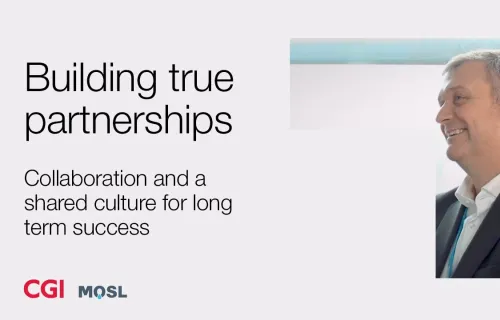This article was written by Rich Hampshire in association with Utility Week. Subscribers of Utility Week can also read the original article published by Utility Week on 9 August 2021.
We undoubtedly all have slightly different definitions of innovation, so it’s probably worth starting by talking about different types of innovation. Most people will think about technological innovation and the development of new products. But what of innovation in services or commercial approaches? Or what of the application of proven solutions from other sectors or geographies to address the challenges being faced in the energy and climate transitions?
I would contend that successful innovation covers a combination of new inventions, novel application of existing solutions, meaningful services and creative commercials.
With the growing demand for innovative solutions to help solve the challenges created by the energy transition and accelerate the journey to net zero, there’s no shortage of support mechanisms for innovation. For more than three decades, CGI has had the privilege of collaborating on digital innovation in the energy sector as the leading information technology partner on numerous innovation projects. Those experiences have provided us with key insights about how to ‘scale fast’ innovations for adoption into business-as-usual operations.
When it comes to innovation, there’s lots of talk about ensuring that projects ‘fail fast’ (a soundbite that I’m sure everyone has heard before). Of course, failing fast is not a statement of the desired outcome. It is about seeking to maximise return on investment in innovation and to limit any losses. The sooner you can identify that something isn’t going to fly, the earlier you can bank the learning and build on that experience.
From our experience of delivering innovation into business-as-usual, there are three elements to consider:
Learn
The reality in innovation is that we learn more when we don’t get the outcome we expect. But how can we understand why we didn’t get what we expected?
It may seem obvious, but that’s about defining the expected outcome, and, more importantly, understanding all the factors affecting how you intend to achieve the outcomes. That means we need to know what we expect to happen, understand why we expect that to happen and, critically, know how to measure what actually happens.
Whether a solution’s technical performance isn’t expected, or users’ behavioural responses are different from those predicted by market research, these insights cause us to revisit our hypotheses, think hard, and make sure that the lessons learnt are incorporated into how we continue to innovate.
Be prepared to pivot
This plays to commercial innovation and the ability to respond to changes in the market and evolving customer needs.
In markets like utilities, where regulatory changes can determine the need for and viability of a solution, the ability to respond to any such changes can be key to how an innovative solution is scaled and commercialised.
A good example is where a gap in the market for a product was identified, but a policy change stalled the market. In that case, the ability to pivot the commercial offering from a product to a service, where the fixed costs were fairly distributed over multiple service users, meant that a price point could be achieved that enabled the solution to continue to scale.
Collaborate
The energy transition is, by its nature, complex with many stakeholders and interests. One of the vital elements of transferring innovation from concept to ‘business-as-usual’ value is collaboration and partnering.
The art of collaborating across the value chain to establish common interests and understand the respective value drivers, costs and risks, and then to ensure that these factors are distributed fairly and appropriately is vital. This enables risks to be borne by the partners that are in the best position to manage them, with costs and returns being apportioned appropriately.
Our recent research with Utility Week on Paving the Way to Net Zero: Data and Digitalisation Requirements for the Energy Transition demonstrated a strong consensus across the sector on what needs to happen. This provides confidence that the collaboration needed to deliver the innovation required for utilities to support the journey to net zero is achievable.
The challenge is to build on these experiences and, once an innovation demonstrates potential, establish pathways to ‘scale fast’, industrialise and commercialise innovation so that the business-as-usual value is created.
When it comes to delivering innovation, we certainly live in interesting times. I’ll leave it to you to decide whether that is a blessing or otherwise.





